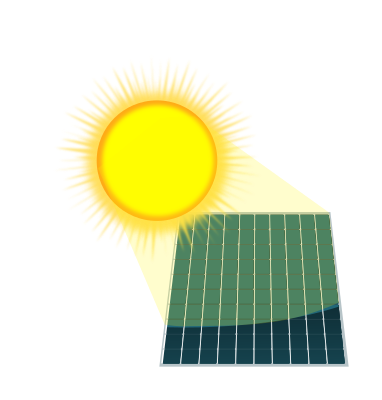Researchers at Martin Luther University Halle-Wittenberg (MLU) have discovered a new method to increase the efficiency of solar cells by a factor of 1,000. The team of scientists achieved this breakthrough by creating crystalline layers of barium titanate, strontium titanate, and calcium titanate, which were alternately placed on top of one another in a lattice structure.
Their findings, which could revolutionize the solar energy industry, were recently published in the journal Science Advances.

The headline seems to be a but misleading though. Seems like it’s 1000x more efficient than pure barium titanate would be.
Also seems like it has the potential to be much ore efficient than conventional silicon based panels, but not by a factor of 1000.Thanks for clarifying that. That publication can be prone to clickbait style headlines it seems but they also publish some good information overall and I thought it was worth noting

Thanks for the reality check. Still a huge result if it translates well into mass production.

Indeed, this seems impossible. Current solar panels are surprisingly efficient as it stands.

It says in the article
compared to pure barium titanate of a similar thickness, the current flow was up to 1,000 times stronger
And in the referenced paper
In addition, the photoresponse from SBC222 is 1000 times higher than that from BTO
Neither sound like a measure of efficiency to me. But I’m also no expert and the paper went well beyond my head.

“Strong current flow” is informal language, but both it and photoresponse refer to the electrical power that comes out. In theory you would just divide that by the incoming solar flux and get the efficiency. For now it’s only in a lab setting, though, so we’ll have to see what the practical efficiency will be if this is actually incorporated into a reasonable solar cell.
So yeah, apparently barium titanate solar panels used to be extremely terrible, and now they might become competitive with further research.

It’s not a measure of efficiency per se, but efficiency is a limiting factor:
In order for a solar panel to put out 1000x more power, the baseline you’re comparing it to must be at most 0.1% efficient, because otherwise the new thing would have greater than 100% efficiency and that isn’t possible.
And that’s a purely thermodynamic argument. The actual limit for solar efficiency is likely less.

shit, they generate more energy than they receive… move aside cold fusion

I think what they’re saying is that this new method is 1000x more efficient compared to previous solar panels made of ferroelectric crystals, not compared to the standard silicone ones. So it’s more like “previous alternative solar panel that sucked now might not suck” rather than “existing solar panels now make 1000x more power.”

Base solar panel = 14% effecient x 1000 = 14,000% effecient. The only way the math works is if the new panels are 100% efficient and they are referencing a rock as a standard solar panel. I’m calling BS.

When conducting the photoelectric measurements, the new material was irradiated with laser light. The result surprised even the research group: compared to pure barium titanate of a similar thickness, the current flow was up to 1,000 times stronger, despite the fact that the proportion of barium titanate as the main photoelectric component was reduced by almost two thirds.

Any domain that ends in .news is full of A-grade bullshit. Just something I’ve noticed.

Anything claiming a 1000 times improvement on a technology needs to come from several serious sources to be remotely credible

It’s a 1000 times improvement the same way riding a horse is a 1000 times improvement over riding an army of snails. It’s possible because nobody was doing the old thing because it was garbage.

Hm, no words about real efficiency compared to existing tech nor reciclability and other less important factors than 1,000x better efficiency.


